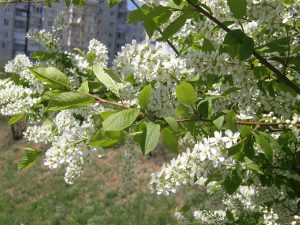
Alaska’s lakes, streams and forests are, in many cases, much as they were before the industrial age, with the same species of trees, plants, fish and animals that would have been found here centuries ago. That’s all in danger of changing. Invasive plants on land and water can spread rapidly. It has already happened elsewhere in the US, often with devastating impacts on natural ecosystems. Here, there is more of a chance to snip the problem in the bud before it spreads too far. Weeds entering a new system are something like viruses, or cancers, that can be dealt with relatively easy in the early stage, but become unmanageable if they go too far. The hopeful news is that Alaskans are tackling this challenge, and it is not too late to make a difference. We’re learning about invasives on this episode of Outdoor Explorer.
HOST: Charles Wohlforth
GUESTS:
- Gino Graziano – Invasive plant specialist for the UAF Cooperative Extension Service
- Tim Stallard – Invasive plant coordinator with the Anchorage Park Foundation
- Toby Schwoerer – a senior research economist at UAA’s Institute of Social and Economic Research
- John Morton – Supervisory Fish & Wildlife Biologist at Kenai National Wildlife Refuge
LINKS:
- AlaskaInvasives.org With information on the Smackdown
- ADFG article on cyanide poisoned moose
- Do you know what you grow?? -pdf
- Don’t Plant a Problem -pdf
- Alaska Weeds ID app, available on iOS and Android
- Invasive elodea species intrigues economist, from Alaska Public Media
- Tobias Schwoerer’s article in the Alaska Dispatch News
- KTVA’s news piece featuring Gino Grazanio, showing some of the plants mentioned
BROADCAST: Thursday, June 15, 2017. 2:00 pm – 3:00 p.m. AKT
REPEAT BROADCAST: Thursday, June 22, 2017. 8:00 – 9:00 p.m. AKT
SUBSCRIBE: Receive Outdoor Explorer automatically every week via:
Go to OUTDOOREXPLORER.ORG
cwohlforth (at) alaskapublic (dot) org | About Charles




